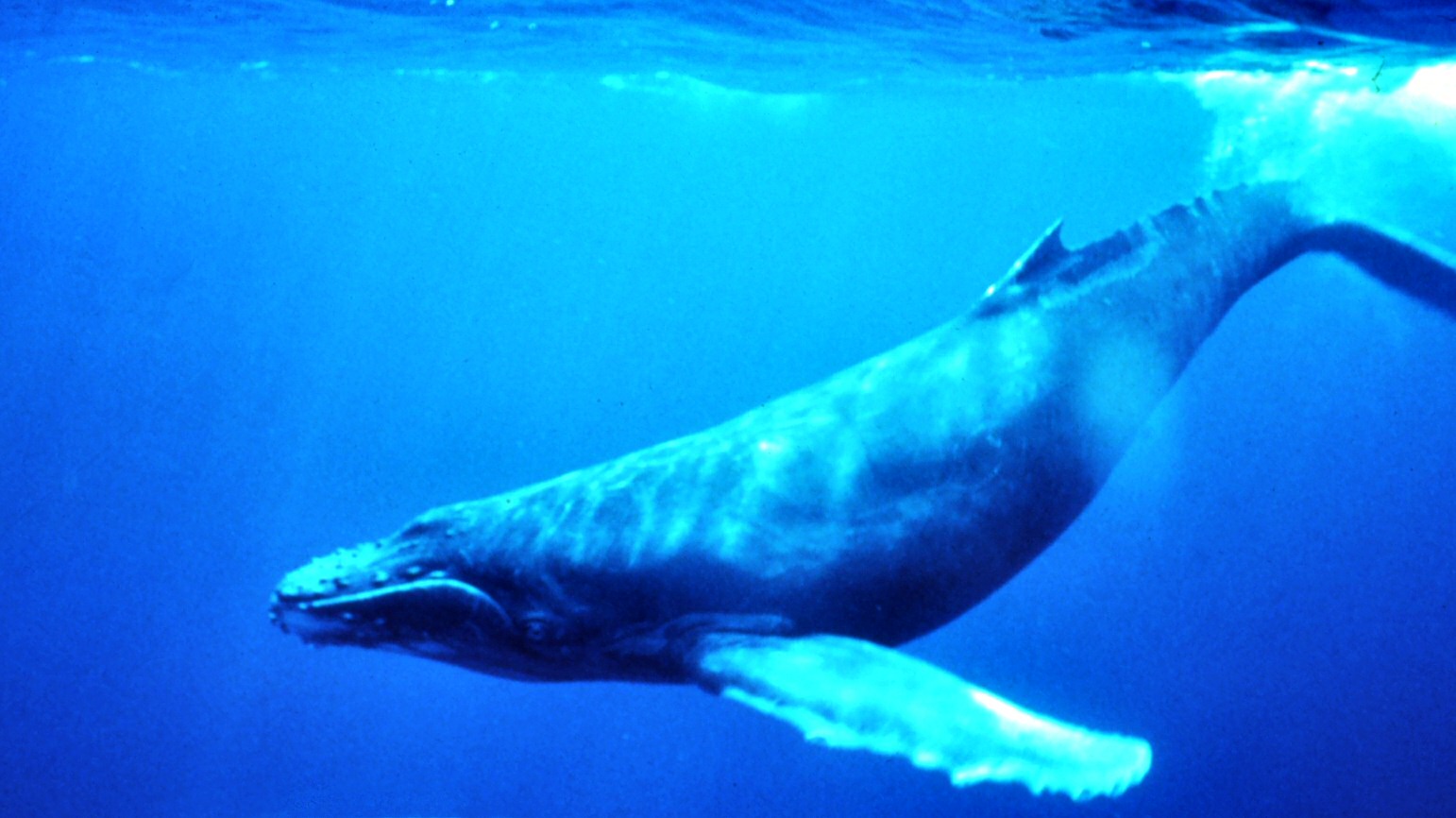Satellite tracking of 16 humpback whales migrating across the oceans between 2003 and 2010 revealed that the cetaceans can swim legs of their journeys of more than 4,000 miles with unswerving accuracy, despite weather and ocean currents. Most of the whales maintained almost dead-straight courses during their seasonal migrations, often deviating by less than one degree and never more than about five degrees.
The findings, published in the Royal Society’s journal Biology Letters (Horton, T., Holdaway, R., Zerbini, A., Hauser, N., Garrigue, C., et al. [published online before print April 20, 2011] Straight as an arrow: humpback whales swim constant course tracks during long-distance migration, doi: 10.1098/rsbl.2011.0279) have led scientists to suspect that the whales navigate using a combination of the sun’s position, Earth’s magnetism, and even star maps to guide their journeys. According to the abstract, “Humpback whale seasonal migrations, spanning greater than 6500 km of open ocean, demonstrate remarkable navigational precision despite following spatially and temporally distinct migration routes. Satellite-monitored radio tag-derived humpback whale migration tracks in both the South Atlantic and South Pacific include constant course segments of greater than 200 km, each spanning several days of continuous movement. The whales studied here maintain these directed movements, often with better than 1° precision, despite the effects of variable sea-surface currents. Such remarkable directional precision is difficult to explain by established models of directional orientation, suggesting that alternative compass mechanisms should be explored.”
In conclusion, the article states: “Here, we offer several insights into humpback whale migratory orientation. First, humpback whales commonly follow highly directional headings with extreme precision over large expanses of open ocean, despite the effects of sea-surface currents, bathymetry and weather. Second, constant course oceanic movements require correction for passive displacement using an exogenous spatial reference frame and orientation cues. Third, although our findings suggest that humpback whale navigation is compatible with ‘goal orientation’ using a map and compass system, it seems unlikely that individual magnetic and solar orientation cues can, in isolation, explain the extreme navigational precision achieved by humpback whales. The relatively slow movements of humpback whales, combined with their clear ability to navigate with extreme precision over long distances, present outstanding opportunities to explore alternative mechanisms of migratory orientation based on empirical analysis of track data.”



